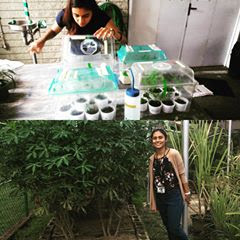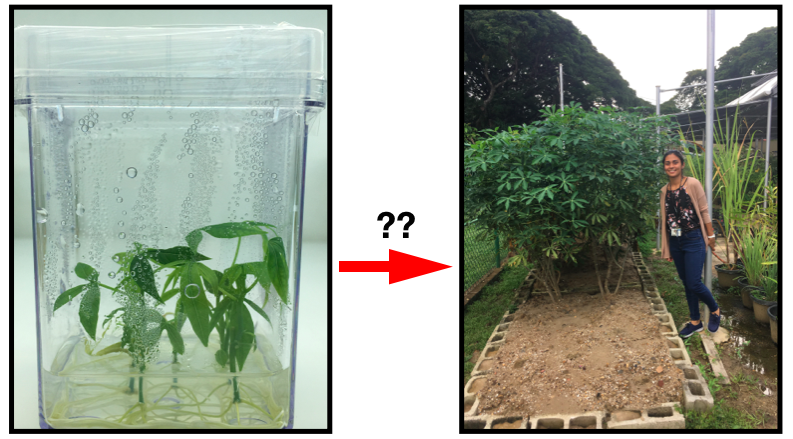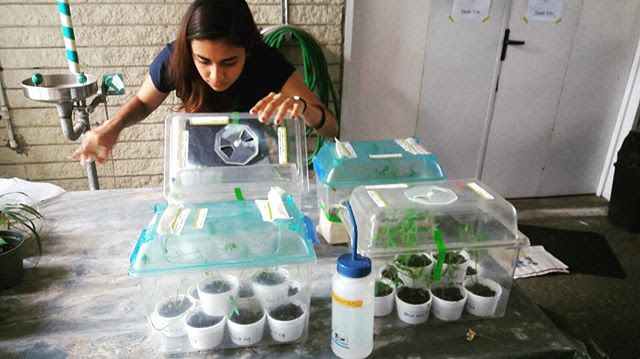Welcome back! I do hope you enjoyed the last post introducing you to the cool side of science 😉 (not that science isn’t usually cool). We discussed growing tissue culture plants (TCPs) in the lab; those bonsai-looking plants that you can grow in an air-conditioned room under a fluorescent light bulb. What good would they really be, however, if they’re just sitting pretty on the shelf? How does one take a TCP and transform it into a fully grown outdoor plant? Well look no further! TheGreenScientist is here to enlighten you! These tips don’t only apply to tissue culture; you can also transplant and harden seedlings from a greenhouse to your garden using some of these considerations.
TRANSPLANTING & HARDENING OFF 101

What is transplanting and hardening off?
Transplanting, in agriculture and gardening, is the process of moving plants from one environment to another. This usually involves moving a fully germinated plant to new soil composition and location for more permanent means. This is a very important part of your plant’s life, especially if you’re raising it from seed to maturity where nutrient and soil requirements will change throughout, or in our case, transferring TCPs from the lab to the outdoors.
Hardening off is the process whereby plants are introduced to their new environment for specific lengths of time, gradually increasing the time they stay in their new environment. This is done to acclimate the plants to their permanent settings.
____________________________________________________________________________________________
Before we get into the process of transplanting and hardening TCPs, we need to address some important (and pretty interesting) facts about these plants.
- TCPs barely, if ever, photosynthesise– Weird, I know. It baffles me as well. TCP chloroplasts* are underdeveloped. They also have lowered cell and tissue development, and reduced stomatal* function compared to outdoor plants. This severely reduces the plant’s ability to photosynthesise.
*chloroplasts– cell structures that house chlorophyll
*stomata– tiny pores located on the underside of a leaf that facilitate gaseous exchange between the leaf and the outside, i.e. carbon dioxide (CO2) taken into leaf- oxygen (O2) released from leaf. CO2 is a core component of the photosynthetic process.
- TCPs use sucrose as an energy source– nutrient media used to grow TCPs contain sucrose which acts as an energy source for plant growth. Remember, these plants aren’t photosynthesising to create their own food to fulfil metabolic processes.
- TCPs use light for photomorphogenesis, not photosynthesis- As TCPs cannot photosynthesise, they use light for other light-dependent processes like leaf development and stem elongation.
____________________________________________________________________________________________
So now that we have those facts down, it’s time to get to business. 
TCPs undergo major changes after transplanting; during hardening off:
- Their leaves become more hardy and begin to resemble their outdoor counterparts, instead of the thin, fragile things they once were.
- Stomata (pores for gaseous exchange) become functional and allow CO2 to be assimilated into the leaf. Photosynthesis can then begin.
- Chloroplasts and chlorophyll fully develop. Light energy can now be harvested for photosynthesis to occur efficiently.
We must make the plants as comfortable as possible during transplanting and hardening off. We can break down the requirements into 3 sections:
- Nutrients
- Humidity
- Temperature/ light
♦ NUTRIENTS
The plants won’t be living in nutrient media anymore. We will be transplanting them into potting mix. This mix is not soil. Soil is too harsh for your plantlets since its components are not suitable for their growth (e.g. nutrient overload can occur). Potting mix is Gerber baby food for plantlets. It contains adequate organic matter and nutrients for healthy plantlet growth, and retains enough water to sustain them with minimal disturbance. This also pertains to growing standard seedling types.
You must ensure all nutrient media is removed before transplanting to promix; fungi and bacteria will thrive on this media if it’s still attached to the plantlet, consuming it into oblivion (yes it’s that serious).
♦ HUMIDITY
Once in promix, the plantlets need a high humidity environment. It’s imperative to remember that TCPs are housed in a box where humidity is at 100%. In the lab, simply opening the box for a few minutes will cause the plants to wilt as they are not accustomed to the lab’s ambient conditions. We house newly transplanted plantlets in sealed containers that will mimic growth vessel humidity. As time goes on, we gradually remove the container lid to reduce the humidity level until the plantlets are fully acclimated to ambient conditions.

(this is not required for hardening normal seedlings)
♦ TEMPERATURE/ LIGHT
TCPs are housed in a controlled environment with cool temperature. The temperature of the outside environment (in the tropics at least) is a far cry from this. To introduce your plants to this temperature change, one can place the plants in a cool, shaded area for a few hours, then bring them back into their original environment, gradually increasing the time they spend outdoors. It’s even better if you have a permanent hardening area that’s cool, shaded and sheltered from the elements, where they can acclimate to their new surroundings in peace (like in the photo above). This can also be done for normal seedlings when transferring them from a greenhouse or similar, to their permanent location outdoors.
Once they have established, you can move them to their permanent home, wherever that may be!
____________________________________________________________________________________________
So that’s all from me today. I hope you enjoyed this post! Now you officially know how artificial plants can be cultured in the lab and replanted into the outside world. If you have any questions or want me to cover specific content, do let me know in the contact form on this site, or on @the_green_scientist on Instagram!
Until next time,
K xx


Excellent, this academic area is in the right hands (yours), so rock on girl! I think this a great initiative since people can now have a better appreciation for tissue culture, in terms of how rewarding and productive this technique can be. Kudos to you!
LikeLike